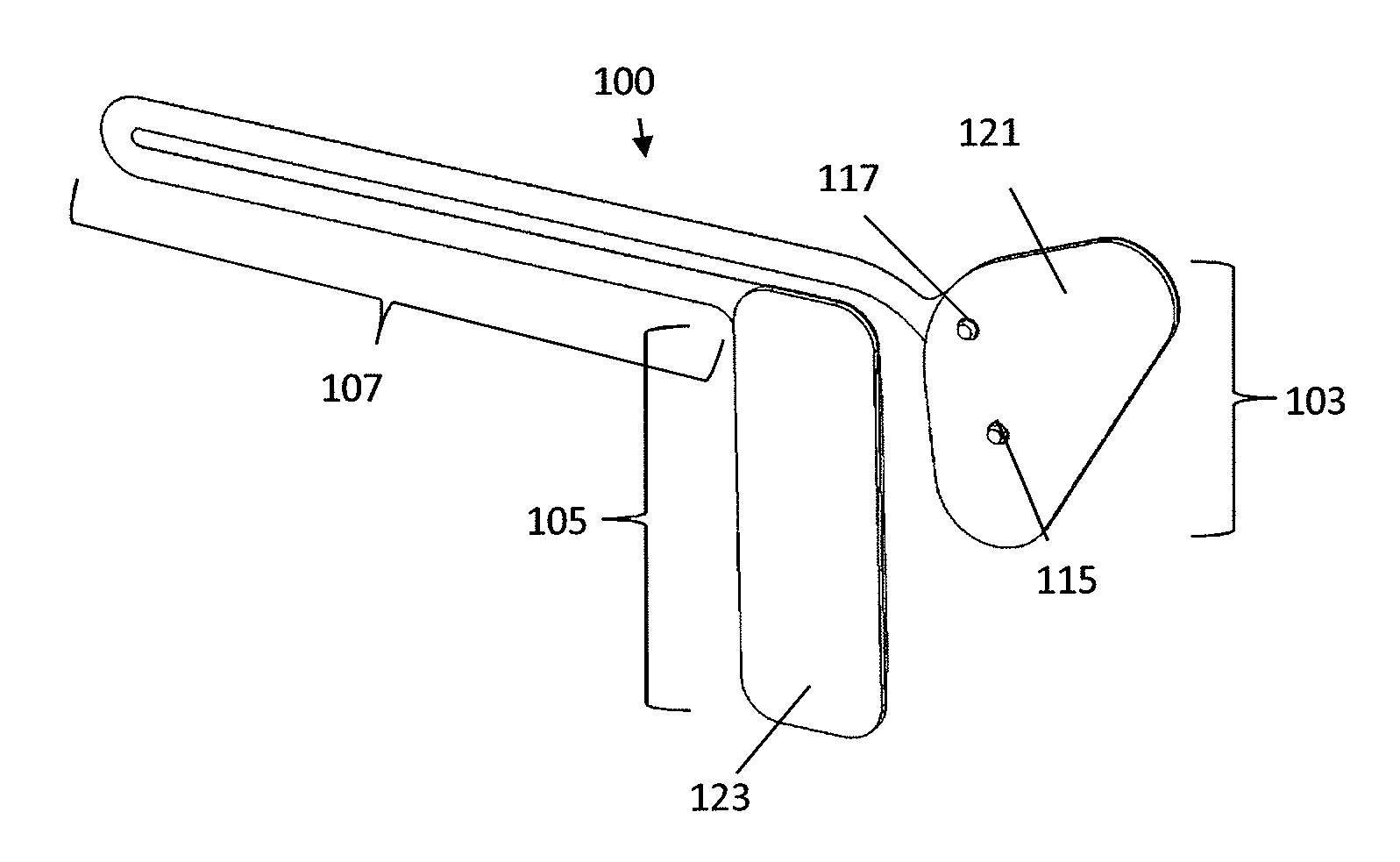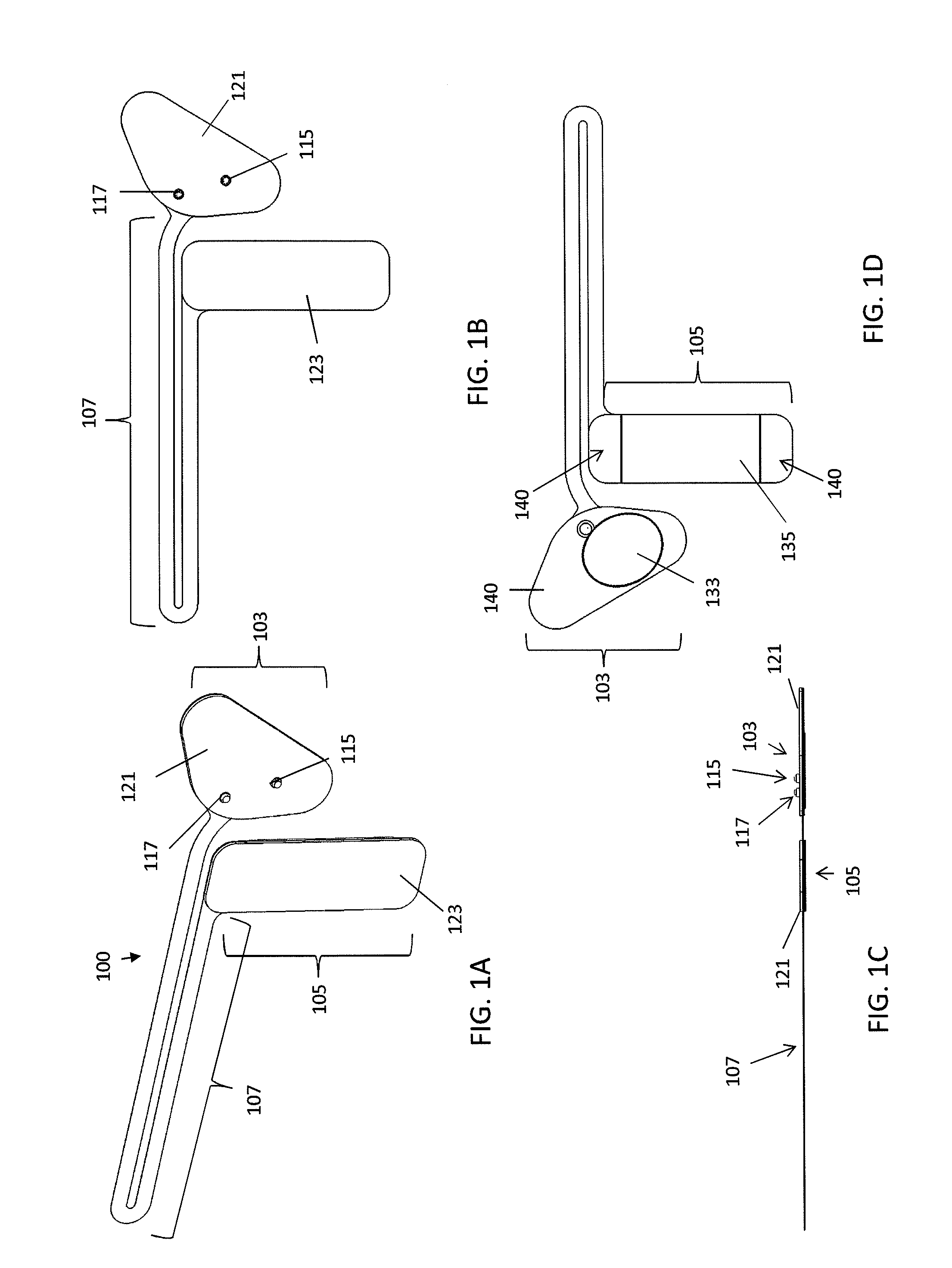Methods for attaching and wearing a neurostimulator
a neurostimulator and electrode technology, applied in the field of non-invasive neuromodulation apparatuses, can solve the problems of inability to effectively and comfortably apply and remove electrodes, lack of existing systems and methods for delivering tes, and long and awkward wear
- Summary
- Abstract
- Description
- Claims
- Application Information
AI Technical Summary
Benefits of technology
Problems solved by technology
Method used
Image
Examples
Embodiment Construction
[0076]In general, described herein are cantilever electrode apparatuses, systems including them, and methods of wearing and using them to deliver neurostimulation / neuromodulation to a subject. The cantilever electrode apparatuses described herein may act as an interface between a wearable, lightweight and self-contained neurostimulator (“electrical stimulator”) and a subject's body, particularly the head or head and neck region, where stimulation is to be applied. These cantilever electrode apparatuses may be disposable (or semi-disposable) components (and may be recyclable or semi-recyclable) that are connected to the neurostimulator and applied directly to the subject; energy (typically current) from the neurostimulator is guided and delivered to the subject by the cantilever electrode apparatus. Although the neurostimulator may be small and lightweight, the cantilever electrode apparatus may allow it to secure to the subject's body and deliver energy to two or more regions on the...
PUM
 Login to View More
Login to View More Abstract
Description
Claims
Application Information
 Login to View More
Login to View More - R&D
- Intellectual Property
- Life Sciences
- Materials
- Tech Scout
- Unparalleled Data Quality
- Higher Quality Content
- 60% Fewer Hallucinations
Browse by: Latest US Patents, China's latest patents, Technical Efficacy Thesaurus, Application Domain, Technology Topic, Popular Technical Reports.
© 2025 PatSnap. All rights reserved.Legal|Privacy policy|Modern Slavery Act Transparency Statement|Sitemap|About US| Contact US: help@patsnap.com



